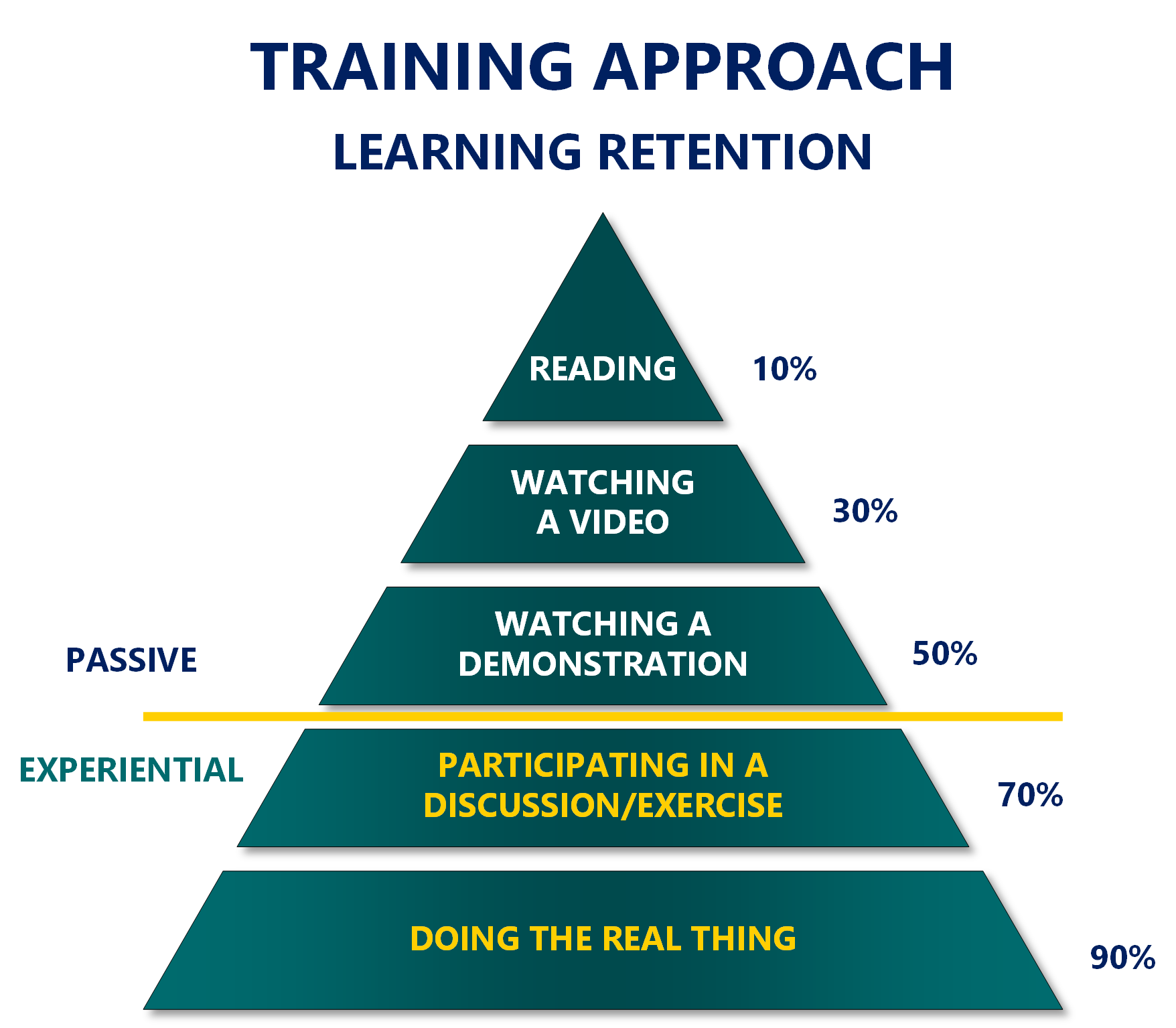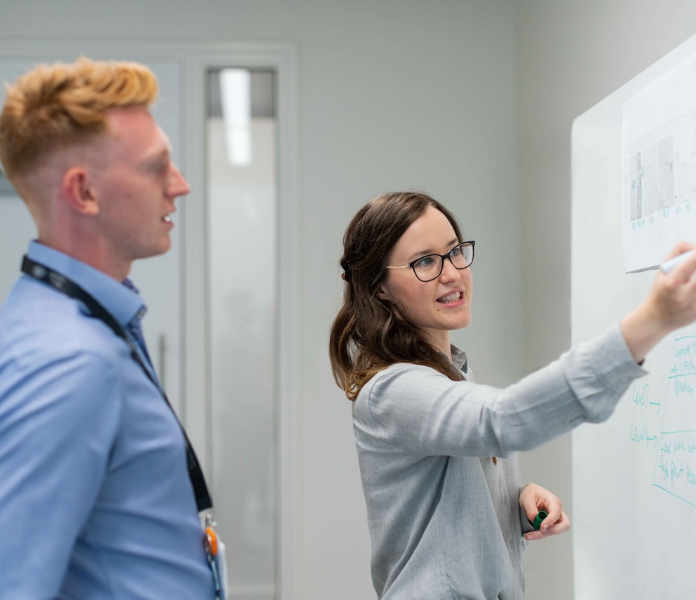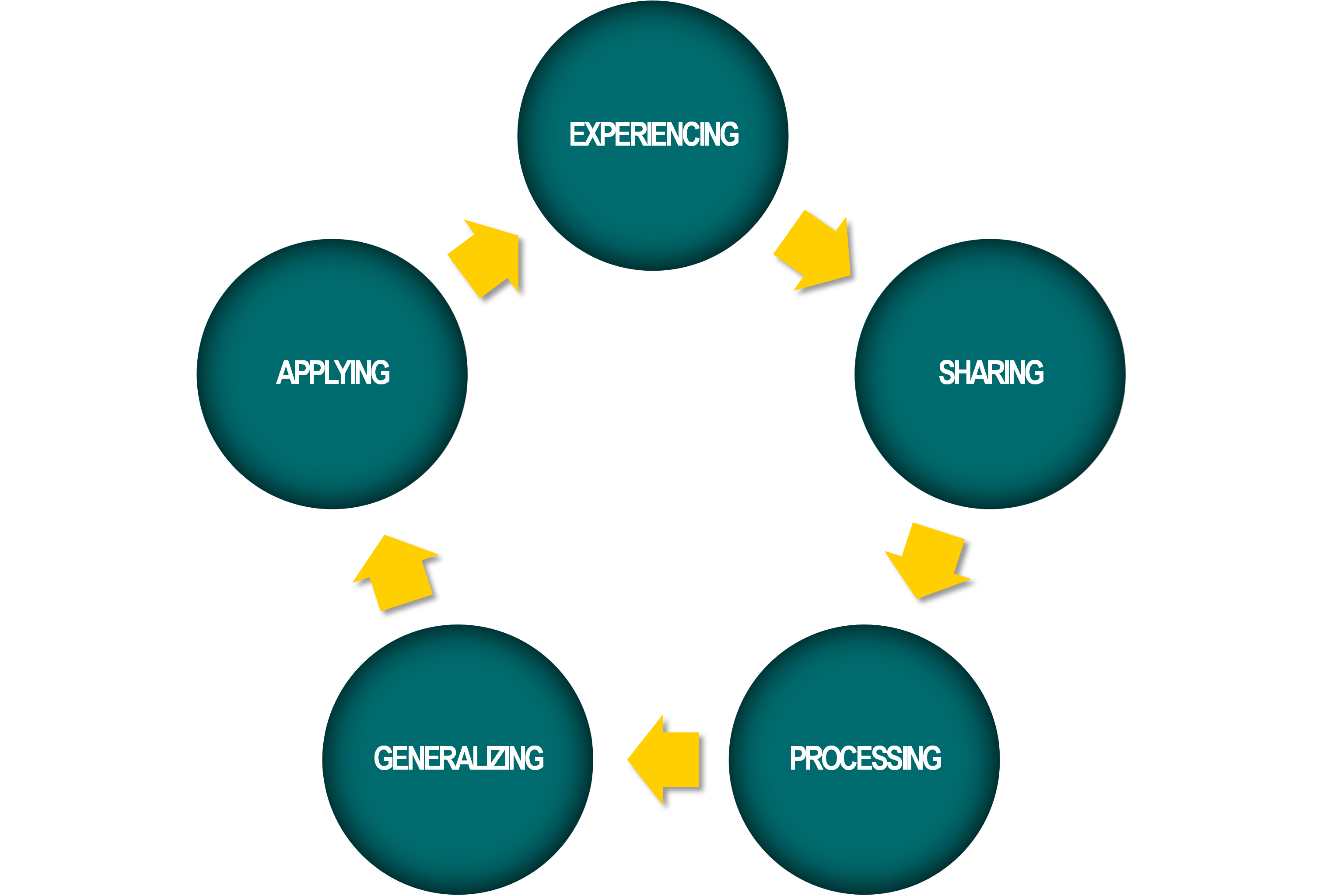Enhancing Learning Retention: The Power of Experiential Training in Critical Decision Making.
Training & Development
Enhance Learning Retention
The amount of information a trainee retains from any learning process is one of the most important things to the facilitator and the trainee. Tests are typically used to measure the amount of retention. Once the test results are evaluated, trainers often ask what could have been done differently to get the trainee to remember and utilize the information longer. This was one of the questions we asked in the development stages of the “Critical Resource Management" workshop. Our goal was to train operators and other personnel engaged in critical decision making to become better at their jobs: jobs that could mean the difference between life and death. What is the answer to developing a training program that enhances retention? The answer is to use a version of the experiential learning cycle.

Experiential Learning
Experiential learning occurs when a person engages in some activity, critically looks back at the activity, gains insight from the analysis, and puts the results to work. To ensure your trainees gain the most from your training, you could consider using the five steps of the experiential learning process.
- Experiencing
- Sharing
- Processing
- Generalizing
- Applying
Experiencing
This initial stage is the data generating part of the process. It is often associated with participating in some event or doing an exercise such as a case study, solving a problem, or giving and receiving feedback. This step provides the trainees with the same initial information. It is important that the trainer explains why or how the activity is useful, but not identify the exact things to be learned.
For example, an operator is engaged in a tabletop exercise involving a specific troubleshooting activity. An experience has just occurred.


Sharing
The second step involves having the trainees share what they saw and/or felt during the event. They have all just experienced the same event, but they will quickly realize they did not all feel or see the same things. This step is often carried out through open discussion. To get the trainees to separate themselves from the activity, individuals can be interviewed about their experiences and feelings during the activity, and their responses recorded for later discussion. This sharing process must always be a multi-person activity.
At this point, the individual understands the troubleshooting activity. They share their feelings and what they saw during the activity.
Processing
In this step, the commonly shared experience is systematically examined. The trainees are led to look at what happened in terms of dynamics, but not in terms of “meaning.” This occurs when trainees report their observations of the activity and look for recurring topics.
The individuals discuss their collective experiences and find out what happens when the conditions lead to the solution of the problem.


Generalizing
This is a very critical phase of the cycle. The individuals associate what just happened in the exercise with the events of everyday life. Questions are asked like: “So what?”, or “How does this exercise relate to my job?” Without fully developing this step the trainees will leave with very little they can use on the job.
The trainees answer the “so what” question by deciding what they learned about the process and the underlying cause of the troubleshooting problem. They also examine what should be done to prevent the problem in the future.
Applying
The final stage of the cycle is to make the whole experience meaningful. The simple question to be answered is, “now what?" The trainer must include a method where the trainee will apply the lesson learned to real-life situations. One method that can be used is to have the trainees write at least two goals concerning the experience.
The trainees set goals relating to how they can prevent the problem from occurring in the future and how they can respond to similar situations.

